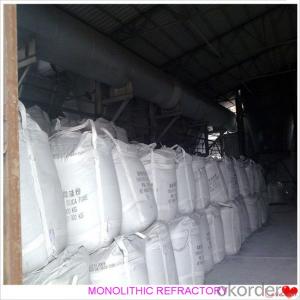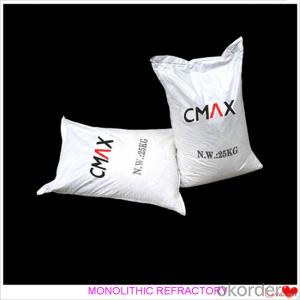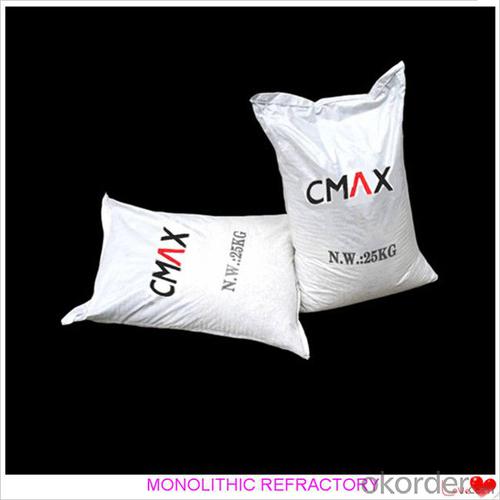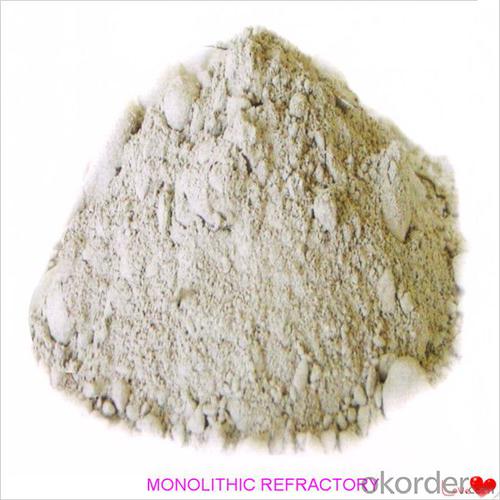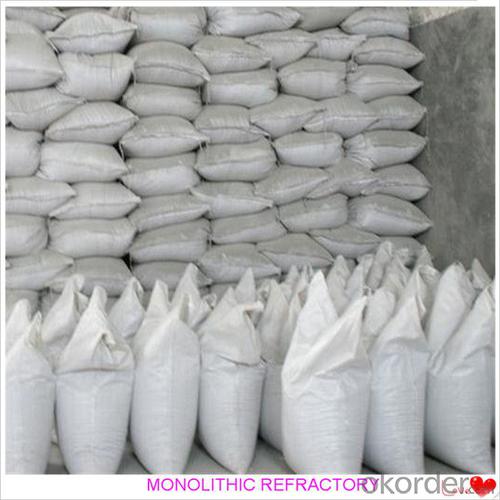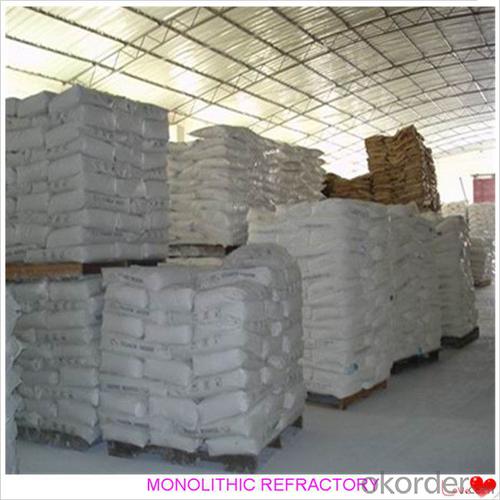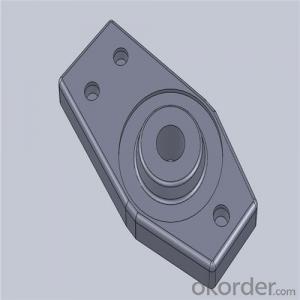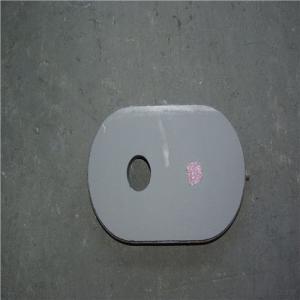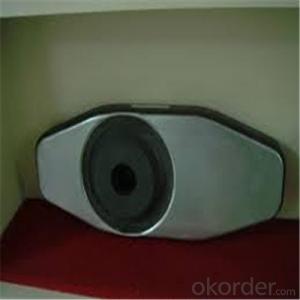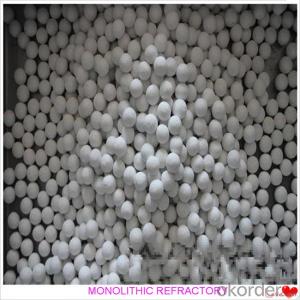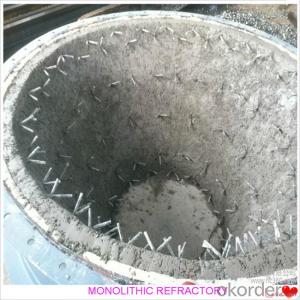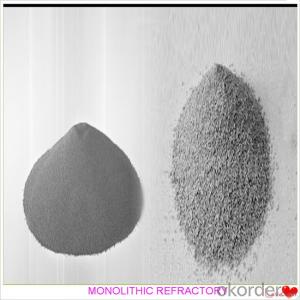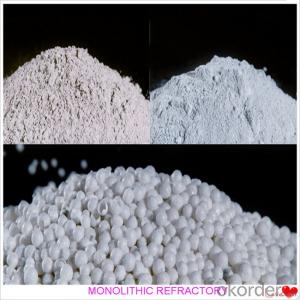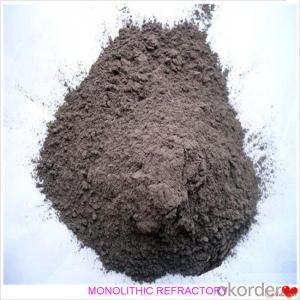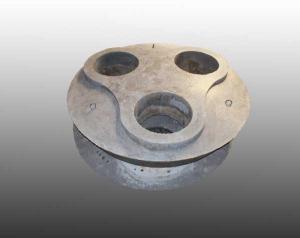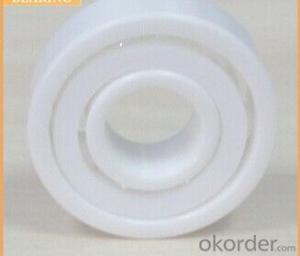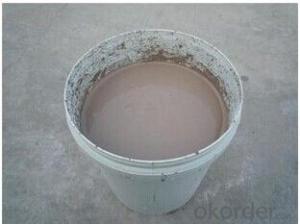Monolithic Refractories for Iron and Steel Industry:Low Weight Castable for Fireplace and Industrial Furnace
- Loading Port:
- China main port
- Payment Terms:
- TT OR LC
- Min Order Qty:
- 1000 kg
- Supply Capability:
- 3000000 kg/month
OKorder Service Pledge
OKorder Financial Service
You Might Also Like
Low Weight Castable For Fireplace and Industrial Furnace in Iron and Steel
Product Description:
Low weight castable is manufactured according to international standards. The product is famous for its excellent abrasion resistance and low thermal conductivity. Further, these can be provided in different specifications as required by the clients. The Low weight castables are used high purity raw materials and additives as the main material, and made of under superfine powder adding technology.
Product Advantages:
The material has excellent structural stability and air tightness, and has high physical and chemical properties, also has a fine working ability.They should be used with the same material products.
Product Applications:
For feature of Low weight castable, they have excellent abrasion resistance, thermal shock resistance, high-temperature resistance, anti-corrode and have high intensity.
Designed for refractory lining of blast furnace iron and slag runners, skimmers and soon
They can be used in troughs of small and mid size BFs and in all positions of the troughs where fast tapping is required.
Product Specifications:
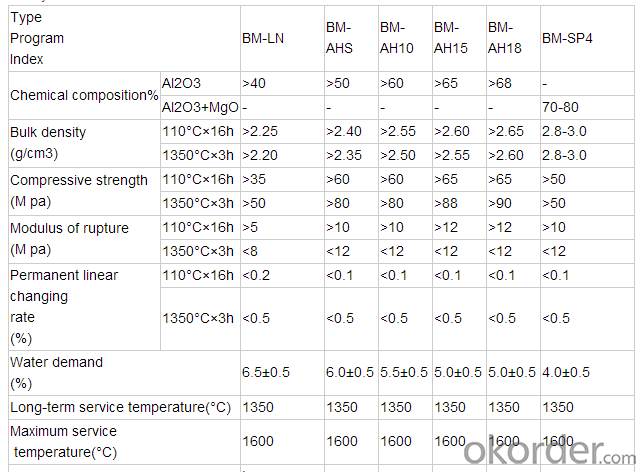
FAQ:
1. How you can control your quality?
For each production processing, we have complete QC system for the chemical composition
and Physical properties. After production, all the goods will be tested, and the quality certificate
will be shipped along with goods.
2. What's your delivery time?
It usually needs about 20days- 45 days after receiving the deposit.
3. Do you provide free samples?
Yes, we can provide a free sample for testing, If we have sample in stock,
The quantity based on the material type, The buyer should bear all the shipping costs.
4. What's your payment terms?
We can accept 30% deposit, 70% balance before shipment for ordrs over $ 2000.
5. Can we visit your Company?
Yes, certainly. You are very welcome to China and we will be honored to have a customer and friend.
Product Picture:
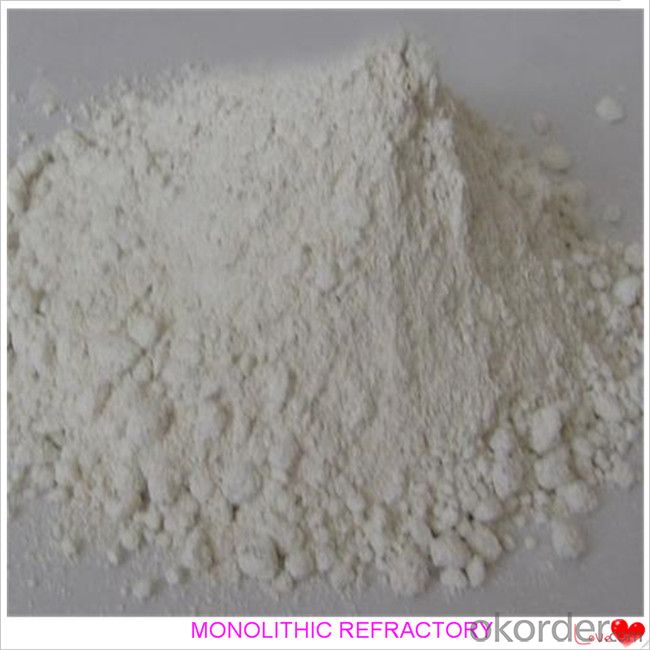
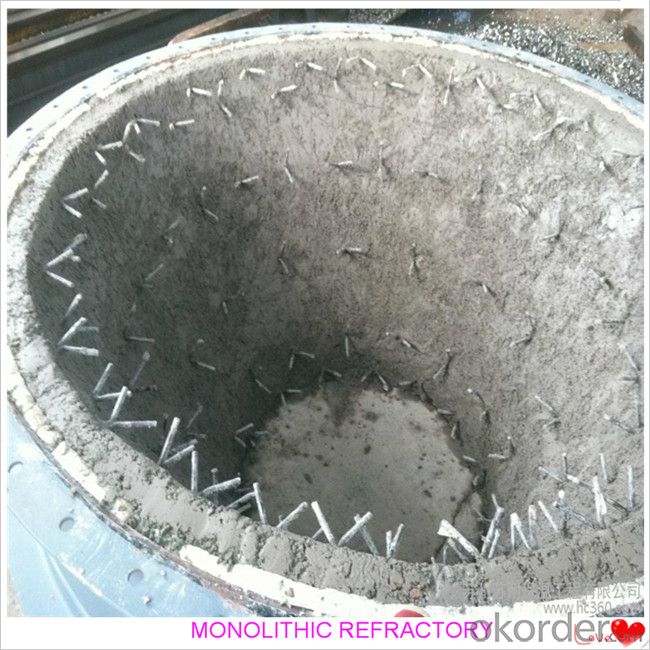
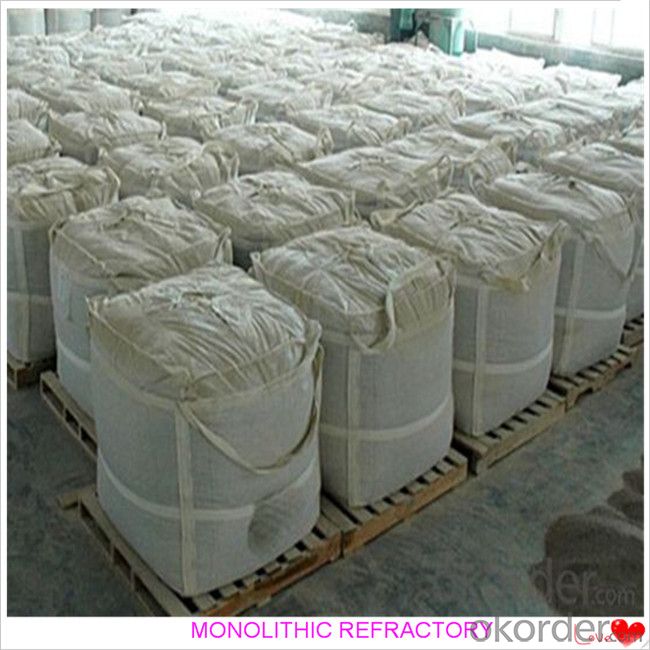
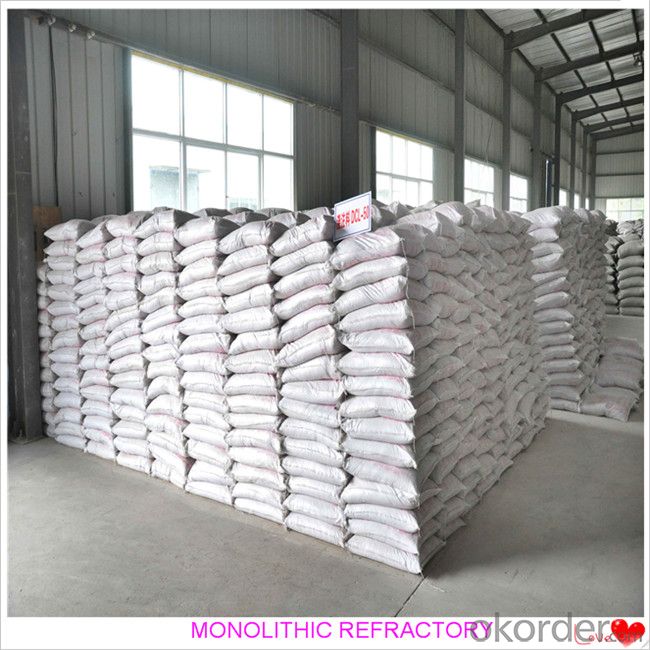
- Q: How does the composition of monolithic refractories impact their performance?
- The composition of monolithic refractories greatly impacts their performance. The choice of raw materials, such as aggregates, binders, and additives, determines the refractory's properties, such as strength, thermal conductivity, chemical resistance, and thermal expansion. The correct composition ensures that the refractory can withstand high temperatures, resist corrosion, and maintain its structural integrity even under severe conditions. A well-designed composition also improves the refractory's workability and ease of installation, allowing for efficient and effective lining applications.
- Q: What are the key differences between acidic and basic monolithic refractories?
- The key differences between acidic and basic monolithic refractories lie in their chemical compositions and their behavior in different environments. Acidic monolithic refractories are primarily composed of acidic oxides such as silica (SiO2) or alumina (Al2O3). These materials have a high resistance to acidic environments and are commonly used in industries where they come into contact with acidic gases or liquids. Acidic refractories are characterized by their ability to withstand high temperatures and resist chemical erosion. They are generally not suitable for use in basic or alkaline conditions, as they can react with basic compounds and lose their effectiveness. On the other hand, basic monolithic refractories are composed of basic oxides such as magnesia (MgO) or dolomite (MgO-CaO). These materials have a high resistance to basic or alkaline environments and are commonly used in industries where they come into contact with basic compounds such as lime or cement. Basic refractories are characterized by their ability to withstand high temperatures and resist chemical erosion from basic compounds. They are generally not suitable for use in acidic conditions, as they can react with acidic compounds and lose their effectiveness. In terms of their physical properties, acidic monolithic refractories tend to have higher melting points and better thermal shock resistance compared to basic monolithic refractories. This is due to the higher melting points of acidic oxides and their ability to form stable silicate or aluminate structures at high temperatures. On the other hand, basic monolithic refractories generally have higher density and better resistance to penetration by molten materials. In conclusion, the key differences between acidic and basic monolithic refractories lie in their chemical compositions and their behavior in different environments. Acidic refractories are suitable for acidic conditions, have higher melting points, and better thermal shock resistance, while basic refractories are suitable for basic conditions, have higher density, and better resistance to penetration by molten materials.
- Q: What are the main factors affecting the corrosion resistance of monolithic refractories?
- The corrosion resistance of monolithic refractories can be influenced by several important factors. To begin with, the refractory material's chemical composition plays a significant role. Refractories with high levels of silica (SiO2) generally exhibit greater resistance to corrosion due to silica's excellent resistance to acidic environments. Conversely, refractories with high alumina (Al2O3) content are more resistant to basic environments. Furthermore, the microstructure of the refractory material is crucial. A compact and well-bonded microstructure offers better corrosion resistance compared to materials with a porous structure. The presence of pores or cracks can allow corrosive substances to penetrate and attack the refractory, leading to its degradation. The temperature at which the refractory is exposed also affects its corrosion resistance. Higher temperatures can accelerate the corrosion process by promoting more aggressive chemical reactions. Additionally, thermal cycling, which involves subjecting the refractory to repeated heating and cooling, can create thermal stresses that contribute to material degradation. The type and concentration of corrosive agents present in the environment also impact the corrosion resistance of monolithic refractories. Different corrosive agents have varying levels of reactivity with refractory materials. For instance, acidic substances like sulfuric acid or hydrochloric acid can cause significant corrosion, whereas alkaline substances like calcium oxide can lead to a more gradual degradation. Moreover, mechanical stress applied to the refractory can influence its corrosion resistance. Mechanical vibrations, abrasion, or impact can weaken the refractory structure, making it more susceptible to corrosion. Lastly, the manufacturing and installation process can affect the corrosion resistance of monolithic refractories. Factors such as proper mixing, curing, and drying techniques can contribute to the development of a more resistant refractory structure. In conclusion, the corrosion resistance of monolithic refractories is influenced by factors including chemical composition, microstructure, temperature, presence of corrosive agents, mechanical stress, and manufacturing/installation processes. Understanding and managing these factors are crucial in selecting and maintaining the most suitable refractory material for a specific application.
- Q: What are the common testing methods used to evaluate the performance of monolithic refractories?
- The common testing methods used to evaluate the performance of monolithic refractories include thermal conductivity testing, hot modulus of rupture testing, abrasion resistance testing, thermal shock resistance testing, and corrosion resistance testing.
- Q: How do monolithic refractories contribute to the quality of iron and steel products?
- Enhancing the quality of iron and steel products is a crucial role played by monolithic refractories. These refractories consist of a single, solid structure that grants them high resistance against thermal and mechanical stresses. Their unique properties make them suitable for a range of high-temperature applications in the iron and steel industry. To start with, monolithic refractories excel in thermal insulation, maintaining a consistent temperature within furnaces and kilns. This temperature stability is vital for the proper heat treatment of iron and steel, ensuring ideal metallurgical properties and reducing the risk of defects. By preventing heat loss, monolithic refractories promote efficient energy utilization, resulting in cost savings and environmental benefits. In addition, monolithic refractories demonstrate remarkable endurance in the face of harsh operating conditions. The iron and steel manufacturing process involves extreme temperatures, aggressive chemical environments, and mechanical stresses. Monolithic refractories exhibit exceptional resistance to these conditions, ensuring durability and longevity. Their ability to resist thermal shock prevents cracking or spalling, which can lead to contamination and compromised product quality. Furthermore, monolithic refractories provide excellent corrosion resistance, shielding iron and steel products from chemical reactions with molten metal, slag, and other aggressive substances. This resistance not only preserves the integrity of the refractory lining but also prevents contamination of the metal, resulting in improved product quality. Monolithic refractories also offer flexibility in design and installation. They can be shaped, cast, or gunned into various complex geometries, allowing for customization based on the specific requirements of the iron and steel production process. This versatility ensures optimal lining performance, maximizing efficiency and product quality. In conclusion, monolithic refractories significantly contribute to the quality of iron and steel products. Their thermal insulation properties, resistance to harsh operating conditions, corrosion resistance, and design flexibility all play a vital role. By providing a reliable and durable lining in high-temperature applications, monolithic refractories help guarantee consistent and high-quality output in the iron and steel industry.
- Q: How do monolithic refractories contribute to the reduction of downtime in iron and steel plants?
- Monolithic refractories contribute to the reduction of downtime in iron and steel plants by providing superior thermal insulation and resistance to high temperatures, reducing the risk of equipment failure and unplanned shutdowns. Their ability to withstand extreme conditions, such as molten metal and slag, allows for extended operational periods without frequent maintenance or replacement. Additionally, monolithic refractories offer quick and easy installation, repair, and maintenance, minimizing the time required for downtime and ensuring a more efficient and productive operation in iron and steel plants.
- Q: How do monolithic refractories contribute to the reduction of emissions in iron and steel plants?
- Monolithic refractories play a crucial role in reducing emissions in iron and steel plants through their superior thermal insulation properties. These refractories line the furnaces and other high-temperature equipment, preventing heat loss and enhancing energy efficiency. By minimizing heat wastage, monolithic refractories enable iron and steel plants to operate at higher temperatures, leading to increased combustion efficiency and reduced fuel consumption. This, in turn, results in lower greenhouse gas emissions, making monolithic refractories an essential component in the overall efforts to mitigate environmental impact in the iron and steel industry.
- Q: Can monolithic refractories be customized for specific iron and steel processing requirements?
- Yes, monolithic refractories can be customized for specific iron and steel processing requirements. Monolithic refractories are versatile and can be tailored to meet the specific needs of different processing techniques such as iron and steel production. They can be formulated with different materials, densities, and compositions to withstand high temperatures, resist corrosion, and provide optimal thermal insulation. This customization ensures that the refractories effectively protect the equipment and enhance the efficiency and productivity of iron and steel processing operations.
- Q: How are monolithic refractories installed in iron and steel production processes?
- Monolithic refractories are installed in iron and steel production processes using various methods depending on the specific application and requirements. The installation process typically involves the following steps: 1. Surface Preparation: Before installing monolithic refractories, the surface where they will be applied must be properly prepared. This involves cleaning and removing any loose materials, dust, or contaminants from the substrate. 2. Mixing: Monolithic refractories consist of different materials such as aggregates, binders, and additives. These components are mixed in specific proportions to achieve the desired properties and consistency. The mixing process can be done manually or using mechanical mixers. 3. Application: There are different techniques for applying monolithic refractories, including gunning, casting, ramming, and troweling. The chosen method depends on factors such as the shape of the structure, accessibility, and required thickness. - Gunning: This method involves using a gunning machine to spray the refractory material onto the surface. It is commonly used to repair or patch existing linings or for rapid installation in areas that are difficult to access. - Casting: In casting, the refractory material is poured into molds or forms and left to set and harden. This method is suitable for creating complex shapes and large-sized components. - Ramming: Ramming involves manually or mechanically compacting the refractory material into a mold or form using a ramming tool. This technique is commonly used for lining induction furnaces, ladles, and other equipment. - Troweling: Troweling is a manual method where the refractory material is applied and smoothed using a trowel. It is often used for smaller repairs or touch-ups. 4. Curing: After the refractory material is applied, it needs to be cured to achieve its optimum strength and performance. Curing involves allowing the material to dry and harden at a controlled temperature and humidity for a specified period. This step is crucial to ensure the long-term durability and resistance of the monolithic refractory lining. Overall, the installation of monolithic refractories in iron and steel production processes requires careful preparation, proper mixing, and the appropriate application technique. It is essential to follow manufacturer guidelines and industry best practices to ensure a successful installation that meets the specific needs of the production process.
- Q: How are monolithic refractories installed and repaired in iron and steel production facilities?
- Monolithic refractories in iron and steel production facilities are installed by first preparing the surface by removing any existing refractory materials and cleaning it thoroughly. The monolithic refractory is then mixed with water to form a workable consistency and applied to the surface using various methods such as spraying, troweling, or casting. After installation, the refractory is allowed to cure and dry before being heated gradually to the desired operating temperature. In terms of repair, damaged or worn-out monolithic refractories are typically removed by chipping or cutting, and the surface is again cleaned. The new refractory material is then mixed and applied to the repaired area using the same techniques as installation. It is important to ensure proper curing and drying of the repaired refractory before subjecting it to heat. Regular inspection and maintenance are crucial to identify any potential issues and prevent major repairs or replacement in the future.
Send your message to us
Monolithic Refractories for Iron and Steel Industry:Low Weight Castable for Fireplace and Industrial Furnace
- Loading Port:
- China main port
- Payment Terms:
- TT OR LC
- Min Order Qty:
- 1000 kg
- Supply Capability:
- 3000000 kg/month
OKorder Service Pledge
OKorder Financial Service
Similar products
Hot products
Hot Searches
Related keywords
